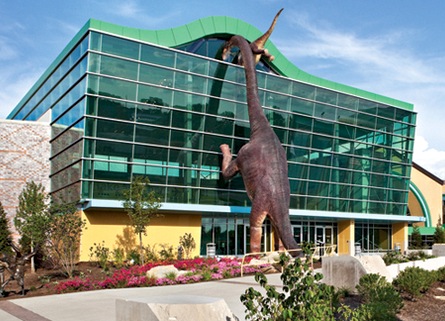
The Howtosmile.org collection includes many activities from the Children's Museum of Indianapolis, the largest children's museum in the world. CMI Science Programmer Becky Wolfe shares her insights on how dinosaurs, books, and culture can get kids engaged in science learning.
How do hands-on activities about dinosaurs get kids so excited about science?
Dinosaurs capture kids’ imaginations. We can’t go to a zoo to see a T. rex, so kids get to imagine what T. rex looked and sounded like. Kids don’t always realize they are learning science at first when studying dinos. It’s easy to convince kids they can “do science” when learning about a favorite creature.
CMI activities make lots of connections with children’s literature and culture. How do these go hand-in-hand with STEM learning?
I look at literacy and culture as an entry point for STEM learning. By using culture or a beloved children’s book, you are engaging students in a different way. It’s also important for children to know that scientists have to read and write to share their findings.
Which is your favorite CMI activity in the Howtosmile.org collection?
I have several favorites—one of them is What’s in a Dinosaur Name. I love this activity because it reminds me of when I worked in a public library and had to help young kids find the dinosaur books. They couldn’t tie their shoes, but could name hundreds of dinosaurs. It’s fascinating to break apart the dino names and dissect what they tell us about the physical features of a species. It’s also one of those activities that has applications beyond science.
Do you have any secrets of success to share with SMILE users?
Grab good ideas when you hear or see them! I love SMILE because it allows me to browse everyone’s great ideas and tweak them for my setting. It’s tempting to try and create the best STEM activity on my own. Collaborating with others can make us all work smarter and create amazing experiences for kids.
What is something educators can do to make summer STEM learning special?
It’s important to think in terms of experiences. How can we create STEM experiences for kids, rather than just a series of activities? There is real value in discovering what kids are curious about and using that as our springboard. There is a lot of pressure to teach content during the school year—summer is our time to let kids really ask questions and experience STEM.
